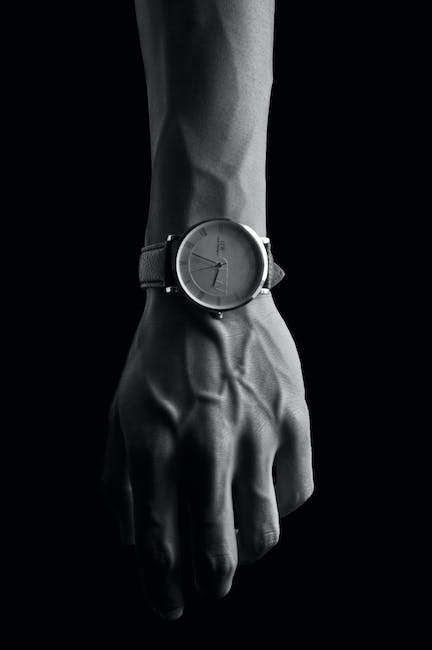What Wrist Do You Wear A Watch On

Watches have been a fashion staple for centuries, and wearing one can make a statement about your personal style. But before you go out and buy a watch, it’s important to know which wrist you should wear it on. That’s because the right wrist can make all the difference when it comes to looking stylish and feeling comfortable. In this article, we’ll discuss which wrist you should wear a watch on and some of the considerations to keep in mind when deciding.The general rule of thumb is to wear a watch on your non-dominant hand. This means if you are right-handed, you should wear your watch on your left wrist and if you are left-handed, you should wear it on your right wrist.
Benefits of Wearing A Watch on the Left Wrist
Wearing a watch on the left wrist has its own set of benefits. It is considered to be the most common and traditional way of wearing a watch and is generally done by right-handed people. Here are some of the advantages of wearing a watch on the left wrist:
One benefit is that it is more convenient for right-handed people to use their dominant hand to operate the watch. It also makes it easier to check the time without having to move your arm from one side to another. Additionally, it is easier to read the time when you tilt your wrist towards you, which can be done more easily with a watch on your left wrist.
Another advantage of wearing a watch on the left wrist is that it helps keep your hand and arm free from any obstructions. This can be especially beneficial in situations where you need to use both hands for tasks such as typing on a keyboard or even driving.
Finally, wearing a watch on your left wrist can also help with balance and posture. As most people are right-handed, having something heavy or bulky on their right hand can cause them to lean slightly towards one side, which can lead to poor posture over time. By wearing a watch on the left wrist, this issue can be avoided as there is nothing else weighing down that side of your body.
All in all, there are many benefits of wearing a watch on the left wrist for right-handed people. From convenience to improved posture, having a watch strapped onto your left arm can make life easier in many ways!
Is It Unusual To Wear A Watch On Your Right Wrist?
Wearing a watch on your right wrist is not unusual. In fact, it is a common practice among many people. Most people wear their watch on their left wrist, but there are some who prefer to wear it on their right. This decision usually comes down to personal preference and comfort.
The most common reason for wearing a watch on the right wrist is because the dominant hand (usually the right) is used for tasks which require precision, such as writing or typing. This makes it easier to access the watch without having to stop what you’re doing and switch hands. Additionally, many people feel that wearing a watch on the right wrist gives them an air of sophistication and elegance.
Another reason why some people choose to wear their watch on the right wrist is because of ease of use. Often times, watches with more intricate features are better suited for the right hand since they are easier to access with your dominant hand. Additionally, some people find that having their watch on their dominant hand helps them remember to check the time more often since it’s always in view.
In general, there is no wrong or right way to wear a watch – it all comes down to personal preference and comfort level. Whether you choose to wear your watch on your left or right wrist doesn’t really matter; what matters most is that you feel comfortable with your choice and enjoy wearing it!
Reasons To Wear A Watch On Your Right Wrist
It is traditional to wear a watch on the left wrist, however, there are some valid reasons why someone might choose to wear their watch on their right wrist instead. Wearing a watch on your right wrist may be more comfortable and convenient for many people. It also allows you to access the time quicker with your dominant hand, making it easier to check the time without having to move it around your wrist. Additionally, if you’re left-handed, wearing a watch on your right wrist can help avoid awkwardness when shaking hands or writing.
Having your watch on your right wrist can also help keep it out of the way while engaging in activities such as sports or exercise. This is especially helpful if you have a larger watch that could interfere with movement or get caught on clothing. Furthermore, wearing a watch on the right wrist can help protect it from potential damage or scratches if you’re working with tools or machines. The extra layer of protection between your hand and the watch face could help maintain its condition for longer.
Finally, wearing a watch on your right wrist can make it easier to adjust the settings if it has multiple functions such as an alarm or stopwatch. This is because most of these settings can be adjusted using buttons located on the right side of the watch face which would be more accessible when worn on the right wrist.
Overall, wearing a watch on either wrist is largely up to personal preference and comfort level. However, there are several benefits to wearing a watch on the right hand that should not be overlooked including quicker access to time, added protection from damage and easier operation of multi-functional watches.

Popularity of Left-Handed Watches
Left-handed watches have been gaining popularity in recent years, due to their unique design and convenience for left-handed people. Although they are relatively new to the watch market, they have quickly become a favorite among watch enthusiasts of all backgrounds. Left-handed watches feature a unique design that allows them to be worn on the left hand instead of the traditional right hand. This design makes them comfortable and easy to use for those who are more comfortable using their left hand. Furthermore, left-handed watches often feature dials and hands that are designed specifically for left-handers, which makes them even easier to read and operate.
The popularity of left-handed watches has been further bolstered by the growing number of left-handed celebrities who have been seen wearing them in public. Some notable celebrities include Zac Efron, Justin Bieber, Kendall Jenner, and many more. This increased visibility has helped to make these watches more popular amongst regular watch wearers as well as amongst those who may not have considered wearing a watch on their left hand before.
In addition, many watch companies are now offering special collections specifically designed for left-handers. These collections often offer unique designs and features that are tailored specifically for those who wear their watch on their left wrist. This has helped to further increase the popularity of these watches as people now have more options when it comes to picking out the perfect timepiece for themselves or someone they love.
Overall, it is clear that there is an increasing demand for left-handed watches in today’s market. With more celebrities sporting these timepieces and more companies offering specialized collections for lefties, it is only natural that this trend will continue into the future. As this demand grows, it is likely that we will see even more exciting new designs from top brands around the world geared towards those who prefer their watch on their non-dominant wrist.
How to Decide What Wrist To Wear A Watch On
The decision of which wrist to wear a watch on is usually a personal preference. However, there are some cultural and practical considerations that can help you make the best choice. Generally, watches are worn on the non-dominant hand, as this leaves the dominant hand free for tasks such as writing or typing. Additionally, wearing a watch on the non-dominant hand may be more comfortable if you use your dominant hand for activities such as lifting weights or playing sports.
In cultures where people shake hands, it is generally considered polite to wear a watch on your right wrist so that it is visible when shaking hands. In some cultures, especially in countries where people greet each other with a bow, it is more common to wear a watch on the left wrist as this will be closer to your heart and therefore show more respect.
If you are wearing multiple watches or bracelets at once, it may be best to alternate wrists from one side to the other in order to avoid too much weight being placed on either one side of your body. Additionally, if you have any medical conditions that may be affected by wearing certain items on certain wrists, such as carpal tunnel syndrome or arthritis, then it is important to take this into account when deciding which wrist to wear your watch on.
Ultimately, deciding which wrist to wear a watch on often comes down to personal preference and comfort level. If you’re unsure or want more guidance, consider asking friends or family members who also wear watches and get their advice. With these tips in mind, you’ll be sure to find the perfect fit for your style and needs!
Does It Matter Which Hand You Wear A Watch On?
Wearing a watch can be a great way to add style and sophistication to any outfit. However, it is important to consider which hand you wear your watch on. Many people believe that the watch should be worn on the left wrist, but there is no definitive answer as to which hand is the right one for wearing a watch.
The most common opinion is that the watch should be worn on the left wrist. This has been the traditional practice for centuries and is still commonly seen today. The reason for this is that it was thought that wearing a watch on the left side of the body would keep it away from potential damage caused by using the right hand.
However, there are also many people who believe that wearing a watch on the right wrist makes more sense. This belief stems from the fact that most people are right-handed, so having the watch on their dominant hand makes it easier to check and adjust it without having to reach across their body with their left hand. Also, some consider it more comfortable to wear a watch on their non-dominant hand.
Ultimately, whether you choose to wear your watch on your left or right wrist comes down to personal preference and comfort. Some prefer tradition and will stick with wearing their watches on their left wrists, while others prefer convenience and will opt for wearing them on their right wrists instead. Whatever you decide, make sure you choose a style of watch that fits your lifestyle and preferences in order to get maximum enjoyment from it.

